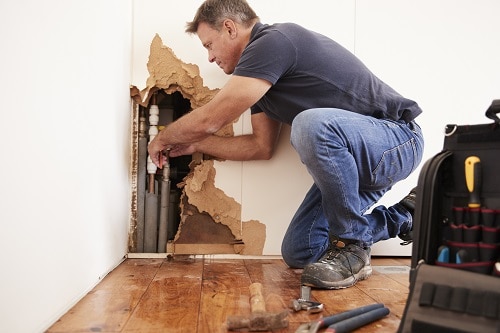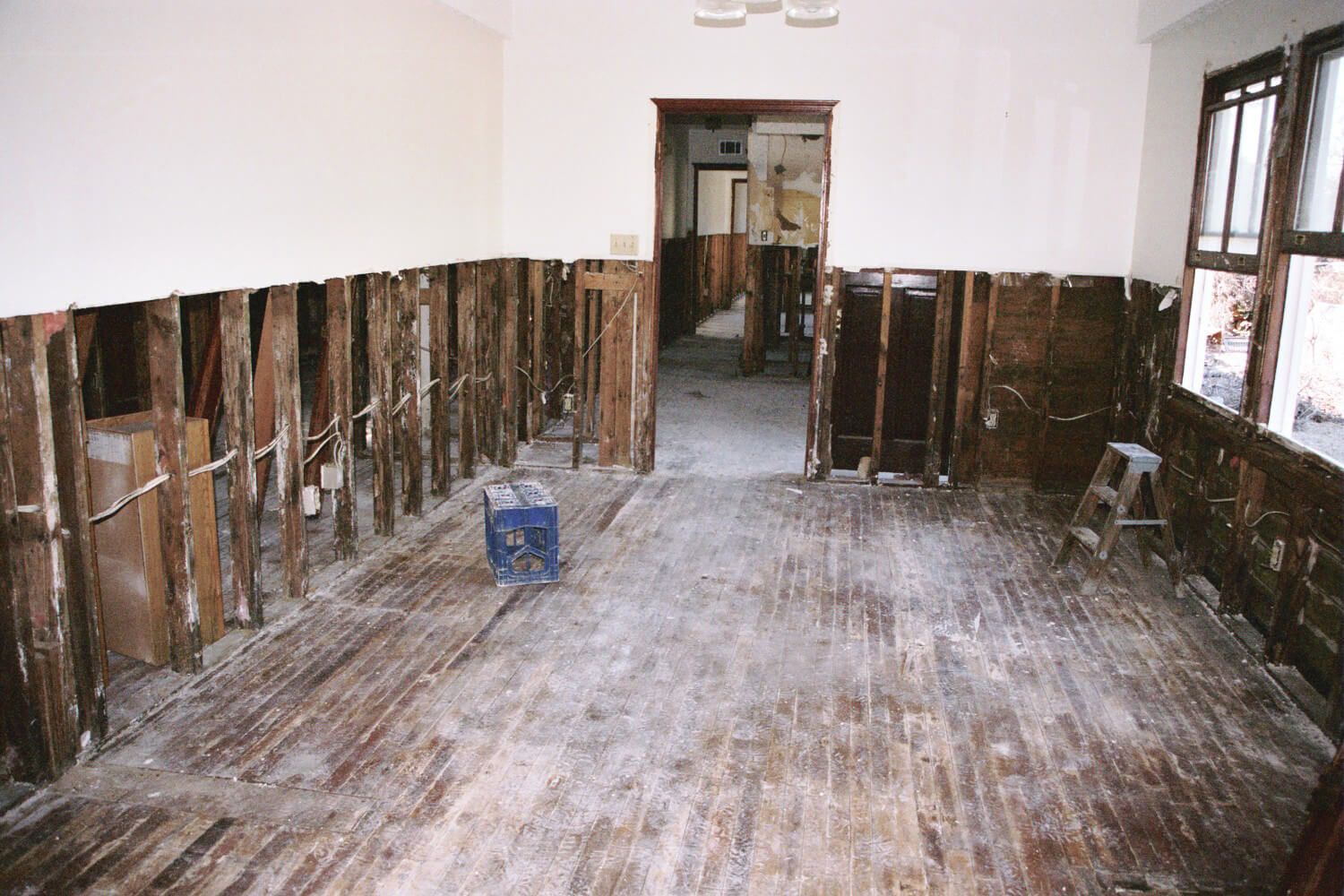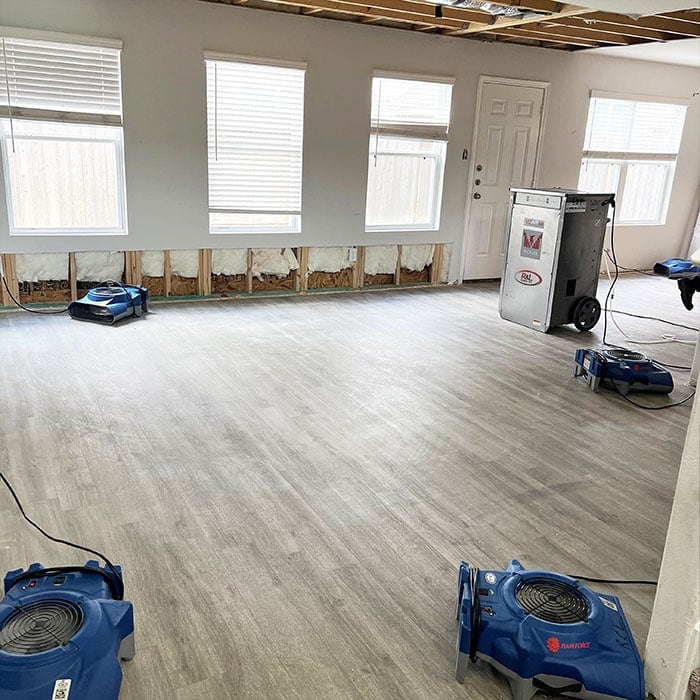Strategic Mold Inspection Philadelphia: Identifying and Dealing With Mold Issues
Strategic Mold Inspection Philadelphia: Identifying and Dealing With Mold Issues
Blog Article
Emergency Water Damage Remediation: Swift Action to Decrease Further Damage
Water damage can strike suddenly and leave damaging results on homes and companies. When confronted with such a circumstance, a speedy response is vital to decrease further damages and prevent potential carcinogen. What specifically does emergency situation water damages reconstruction require? In this conversation, we will certainly dive right into the relevance of prompt activity, the analysis procedure, the actions involved in water extraction and drying out, mold and mildew avoidance and remediation, and ultimately, the restoration of the damaged location. By comprehending the seriousness and extensive nature of this procedure, you will acquire important insights into exactly how specialists take on emergency situation water damage, making sure a swift and efficient reaction.
Significance of Swift Action
Swift action is of utmost significance in water damage remediation to reduce more damage and mitigate prospective dangers. When water damage happens, whether because of a burst pipe, a natural disaster, or any various other unforeseen event, time is of the essence. The longer water beings in a building, the more damage it can cause. This is why it is crucial to act promptly and successfully to eliminate the water and start the remediation process.
Among the main factors swift action is important in water damage reconstruction is to stop the growth of mold and mold. Mold can begin to grow within 24 to two days of water direct exposure, and once it holds, it can spread quickly throughout the affected area. Mold and mildew not only triggers more damage to the framework of the building yet also presents health threats to residents. By reacting swiftly, experts can thoroughly dry the area and prevent the development of mold, decreasing the requirement for extensive remediation and making certain the safety of those entailed.
Water damages can be ruining, particularly when it impacts personal items of sentimental or financial value. Performing quickly enables professionals to assess the damage and implement ideal repair methods to salvage as much as feasible.
Examining the Degree of Damage

During the assessment, restoration professionals thoroughly check out the damaged location to determine visible signs of damages, such as water spots, distorted materials, and mold and mildew development. They likewise use customized tools to identify concealed damage, such as moisture meters and thermal imaging electronic cameras. This thorough examination enables them to accurately establish the degree of the damage and develop a customized remediation plan.
Because it assists professionals prioritize their initiatives,Evaluating the extent of water damages is important. They can recognize areas that call for instant attention, such as standing water elimination and drying, to stop more damage and minimize the danger of mold growth. They can additionally identify the areas that require repairs or substitute, guaranteeing that no damages goes neglected or undetected.

Water Removal and Drying Out Process
The water removal and drying process is an essential action in water damages repair, as it involves the removal of excess water and the complete drying out of the affected area to avoid more damages and mitigate the risk of mold development. After analyzing the level of the water damage, the following action is to remove the water from the affected area.
This action is necessary in stopping additional damages, such as structural damage and the growth of mold and mildew and mold. The drying out go to this web-site procedure may take a number of days, depending on the degree of the water damage and the materials entailed.
It is very important to ensure that the affected area is completely dry before proceeding with any kind of fixings or repair. Failing to completely dry the area can result in long-term issues, including weakened structures, musty smells, and the development of mold and mildew and mold. Consequently, specialist water damages remediation business employ moisture detection devices to ensure that the damaged location is totally dry before continuing to the next action.
Mold And Mildew Prevention and Removal
Effective mold and mildew prevention and removal are vital in water damage reconstruction to guarantee the safety and stability of the affected location. leak detection philadelphia. When water damage happens, whether from a burst pipe, flooding, or a dripping roofing system, it develops an optimal setting for mold development. Mold can start to create within 24 to 48 hours web link after water damage, and if left unattended, it can spread quickly and create major wellness risks
To stop mold and mildew growth, it is necessary to address water damage immediately. The very first step is to identify and repair the resource of the water click to investigate intrusion. When the resource is dealt with, the affected area must be extensively dried out to avoid wetness from remaining. This might involve making use of dehumidifiers, air movers, and various other customized tools to remove excess wetness from the air and surface areas.
In cases where mold development has actually currently taken place, remediation is essential to remove the mold and mildew and stop its return. This entails the cautious removal and disposal of afflicted materials, such as drywall or carpet, to guarantee that all traces of mold are eradicated. It is necessary to note that mold and mildew remediation should be performed by specialists that have the essential training and tools to safely get rid of and manage mold.
Restoring the Affected Location

First of all, it is vital to extensively dry out the location to prevent any further damages and to hinder the development of mold and mildew and mold. This might include using specialized drying devices, such as dehumidifiers and industrial-grade fans, to remove all moisture from the affected surfaces.
Once the location is entirely dry, the reconstruction procedure can start. This might include replacing or repairing harmed architectural components, such as drywall, ceiling, or floor covering tiles. It is very important to address any underlying concerns that may have caused the water damage, such as dripping pipelines or malfunctioning plumbing, to avoid future incidents.
Additionally, recovering the damaged location may likewise include painting walls, replacing damaged components, and thoroughly cleaning and disinfecting the area. This guarantees that not only is the area structurally audio, but it is also aesthetically pleasing and secure for tenancy.
Final Thought
To conclude, swift response is important in lessening additional damage brought on by water emergencies. Assessing the extent of damages permits efficient water extraction and drying out processes to be implemented. Furthermore, mold prevention and removal are vital in restoring the afflicted area. Overall, prompt activity and extensive remediation actions are crucial to reducing the negative influences of water damage.
Swift feedback is of utmost importance in water damage reconstruction to minimize additional damages and minimize potential risks.During the analysis, remediation experts completely check out the damaged area to identify visible indications of damages, such as water discolorations, warped materials, and mold growth.The water extraction and drying process is a vital action in water damages reconstruction, as it entails the elimination of excess water and the thorough drying of the affected area to avoid additional damages and alleviate the threat of mold and mildew growth. After analyzing the level of the water damages, the next step is to extract the water from the affected location.Reliable mold and mildew prevention and remediation are essential in water damage restoration to make certain the safety and security and honesty of the afflicted area.
Report this page